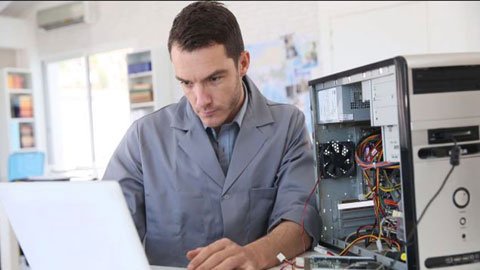“Over the last 20 years, the computer revolution has changed people’s lives all over the world. This has increased productivity in a wide range of industries. With deep-sea drilling and sophisticated design, computers have improved global connectivity. They have put the world’s information at your fingertips.”
Need of Computer Hardware
With the rise of digitization, knowing how to use a computer has almost become a survival skill. A computer is a piece of machinery. These machines, like most machines, contain moving parts. These moving parts allow them to function in a variety of ways. Throughout time, these hardware components have been custom designed. So that they can perform unique functions at varying speeds, capacities, and functions.

If office workers don’t need to store much data, they may have a small hard drive in their work computer. Independent artists, otherwise, may need a larger hard drive to store their work. Of course, we don’t mean physical dimensions when we say “small” or “large.” A hard drive’s capacity, or the amount of data it can store depends on its size.
If you are looking for an online course for learning computer hardware basics; Click Below

Types of Hardware Components
Besides providing a location to plug in the hard drive, CPU, etc., the motherboard also houses the BIOS. BIOS or Basic Input/Output System is the most basic piece of software. included with your laptop.
Types of Hardware
Hardware components come in a wide range of shapes and sizes. Each component serves a specific purpose in the operation of a computer system. There are massive gaming rigs as well as small laptops and laptops. Are you curious approximately your laptop`s hardware? Let’s locate out.
Just understand that hardware additives are available in all shapes and sizes. There are massive gaming “rigs,” and there are tiny laptops and notebooks. We`ll pass over the predominant additives underneath and speak a bit about what every one does.
Motherboard

It provides the core connections for the hard drive, CPU, and specific components. Not only this, but it houses BIOS, or the Basic Input/Output System, the most minimal piece of software on the laptop. When you first flip off a laptop, earlier than it hundreds the running system, it need to boot from BIOS.
Graphics Card

GPUs process and process massive amounts of graphics data, especially in 3D rendering. Your video card contains at least one GPU. The dedicated graphics card communicates with the motherboard via expansion slots. The communication does not occur due to the basic onboard graphics. Upgrade your graphics card to improve the performance of your PC.
Power Supply Unit (PSU)

You can’t operate a computer without power! It transforms alternating current (AC) power into direct current (DC). The aim is to power the sensitive components inside computer. It is important that your power supply unit has fans to reduce the heat. Since overheating can ruin components and reduce performance.
Central Processing Unit (CPU)

The CPU, or central processing unit, handles processing all the information. Gigahertz is the number of instructions per second that a CPU can process. The CPU quality of a computer has a significant impact on system performance.
Hardware Drive

While we are talking about hard drives, let’s take a look at what a hard drive is. This is the most familiar computer hardware to lay people. But if you don’t know what it is, don’t worry! A hard drive is mainly a computer storage device. If you’ve ever downloaded a Word document from the Internet, you’ve it to your computer’s hard drive.
A hard drive consists of several parts including the spindle, drive, and platters. A hard disk drive is a spinning plate. It can be of aluminum, ceramic, or glass. It stores information from your computer. Then depending on its type, performs read/write operations.
RAM (Random Access Memory)

It is the physical hardware inside a computer that temporarily stores data. It is usually located in a memory slot on the motherboard. Its role is to serve as the computer’s “working memory”. It gets used for information generated by programs. In general, the faster the RAM, the faster the memory processes. And in return, faster data moving to other components.
Conclusion
The type of hardware installed is commonly referred to as computer specifications. You don’t need to know how to build a computer from scratch. Instead, understanding what the hardware does can help you troubleshoot it. The right choice of peripherals. The monitor, mouse and keyboard are the main focus. So, your computer may have everything, but without peripherals it will be of no use. A peripheral is nothing but a piece of physical hardware. It allows a computer user to interact with the computer.
